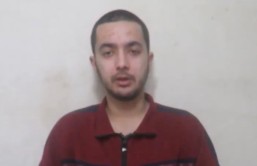An English archaeologist has suggested that the elusive tomb of Queen Nefertiti may have been hidden in plain sight: behind Tutankhamun's grave.
Dr. Nicholas Reeves of the University of Arizona told the Times of London he believes he has discovered a secret doorway leading from the tomb of King Tutankhamun to that of, Nefertiti, believed to be the boy-king's mother, according to Fox News.
Nefertiti, one of the most powerful women in the ancient world, ruled alongside Pharaoh Akhenaten in 14 BC. Despite her infamy and prominence in ancient Egyptian history, her resting place remains a mystery.
Dr. Reeves told the Times he discovered the bricked-up "ghosts" of the doorways after examining digital scans of the walls of Tutankhamun's tomb. He believesone of the doorways leads to a storeroom, but the other, on the north side of the tomb, leads to Nefertiti's resting place, according to Daily Mail.
"If digital appearance translates into physical reality, it seems we are now faced not merely with the prospect of a new, Tutankhamun-era store room to the west [but] that of Nefertiti herself, celebrated consort, co-regent, and eventual successor of Pharaoh Akhenaten," he said.
If Reeves is correct, then the room containing Tutankhamun's tomb was actually built as an antechamber to that of Nefertiti. This revelation would also explain some facts about his grave that has puzzled researchers for centuries.
First of all, the size of Tutankhamun's tomb is smaller than those of other Egyptian kings. Secondly, as Reeve states, many of the artifacts that belonged to the boy-king are second-hand, having been recycled from earlier burials. Lastly, the opening in question appears to have been decorated with religious scenes at an earlier date than the other three walls of Tutankhamun's tomb. The scenes would have been meant to provide protection on the room beyond.
"If I'm wrong, I'm wrong; but if I'm right this is potentially the biggest archaeological discovery ever made," Reeves said about his new theory to the Economist.
A report about the subject by Dr.Reeves was recently published in the Armana Royal Tombs Project.








